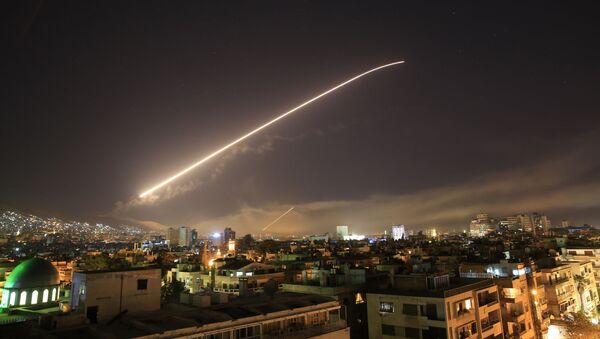According to the outlet, Mattis presented the White House with three military options. The first scenario prescribed missile strikes on Syria’s chemical-weapons capabilities. The second option proposed a wider set of targets, including suspected chemical-weapons research facilities and military command centers.
The most robust attack might have reportedly included strikes on Russian air defense in Syria and some Iranian facilities with the aim to curb the capabilities of the Syrian government army, without touching the "political machinery" of President Bashar Assad.
Informed sources told the media outlet that Trump had pressed his team to consider the third scenario, however, Mattis dissuaded the US leader, who finally approved a hybrid strike comprising the first and the second options.
READ MORE: About 36% Britons Support, 40% Oppose Western Strikes on Syria — Poll
On April 13, the United States, France, and the United Kingdom launched strikes on a number of targets in Syria in response to the alleged chemical attack in the Damascus' suburb of Douma.
The attack came the same day, the Organization for the Prohibition of Chemical Weapons (OPCW) mission was supposed to start the probe into the alleged chemical weapons' use in Douma, which the West has immediately blamed on Damascus. In its turn, the Syrian government has strongly denied being behind the alleged chemical attack and stated that the missile strike was "brutal aggression."
Following the incident, Russian President Vladimir Putin stated on Saturday that the strikes had been carried out in violation of norms and principles of the international law.



